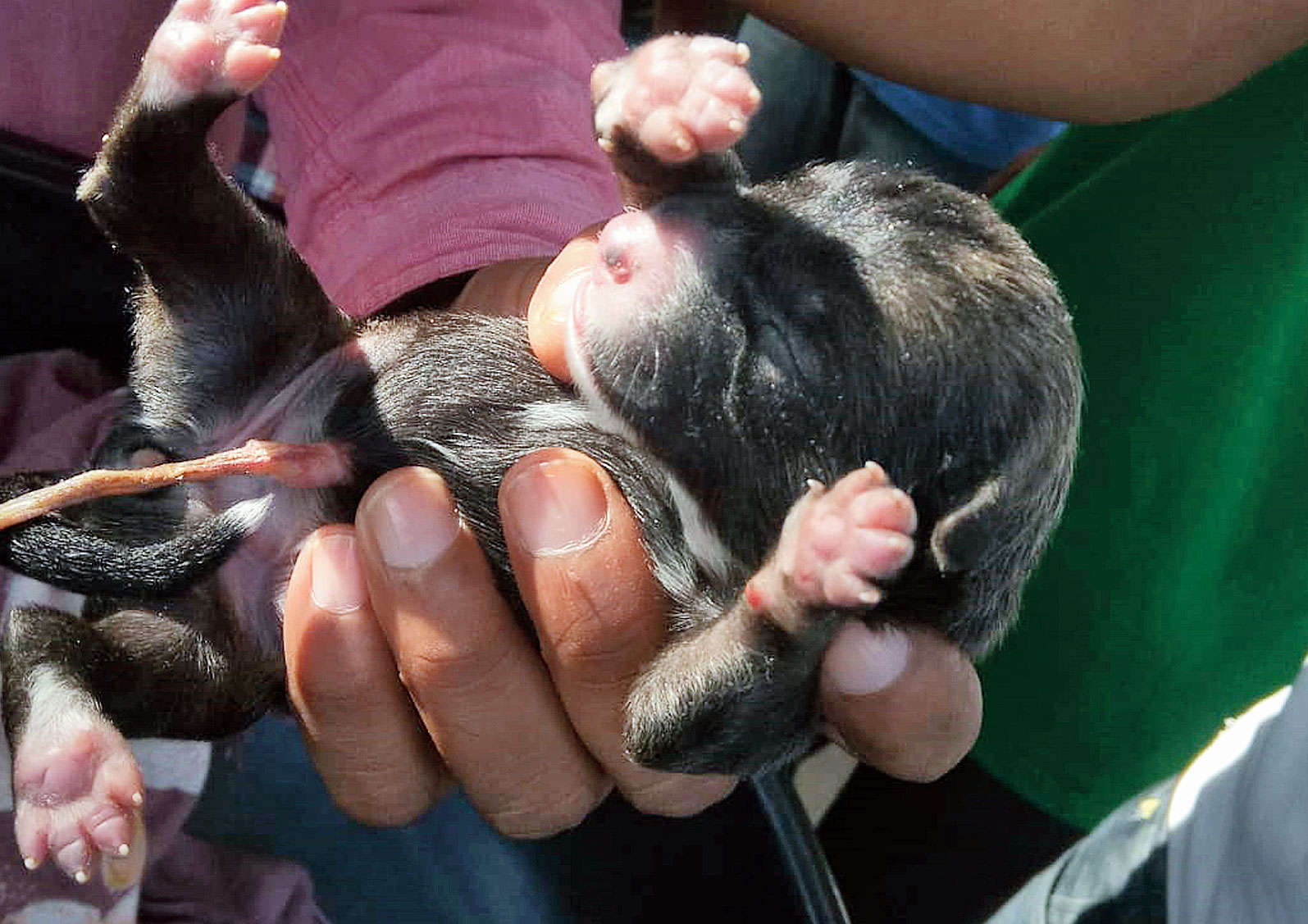A two-day-old honey badger cub, rescued from a Netarhat forest and brought to Bhagwan Birsa Biological Park in Ormanjhi here on Wednesday, is showing encouraging signs of response to the hand-rearing efforts of zookeepers.
The Indian honey badger (Mellivora capensis indica), also known as Indian ratel, is listed by IUCN as a mammal of least concern, but it has only infrequently been sighted in Jharkhand, the last time on record being at Palamau Tiger Reserve in 2012.
The zoo authorities hope that their maiden experience in hand-rearing a leopard cub, which was brought in a similar traumatic condition a year ago, will come in handy to make this little baby stable in days to come.
“It will be a great feat for us if the honey badger cub lives to become independent on her own. We don’t have any badger in this zoo,” said zoo vet Ajay Kumar and explained why.
A ratel cub is born naked and blind in a hole prepared by the mother who typically moves it to a new den every two to five days, he said. The cub develops slowly with eyes only opening after two months. It usually emerges from the den with its mother on short foraging bouts at three months, by which time it develops the mantle.
Kumar has designed a special diet and monitoring roster for the new zoo member. “Two keepers who have hand-reared leopard cubs in the past are now on ratel duty round the clock in shifts. They are feeding the cub every three hours. The routine has to continue till she is stable,” the vet said.
The diet comprises two low-fat milk formulas — one for mammals and the other for human babies.
“It is an important part of hand-rearing abandoned or separated animal cubs. If nutrition is missing in one formula, the other will cover the gap. Low-fat milk is given because the digestive system is still immature,” Kumar said.
Also, since the cub is missing out on her mother’s gamma globulin that helps strengthen immunity, the zoo is administering immuno-modular drugs that are easily available in the market.
“This is given twice a day. Along with it, we have started a digestive enzyme course once a day to help shape up her digestive tract properly,” explained the vet.
The ratel cub is currently being kept in a small covered cage in an isolated place to create the ambience of burrows.
“She has a soft cotton blanket for bed. Extra care is being taken to ensure she does not crawl to the edges of the cage and gets injured. The eyes take time to open,” Kumar said, adding that once the cub was stable, the chief wildlife warden’s office would decided whether to release her back into the wild.
Lohardaga DFO Vikas Ujwal, who had rushed a team to Netarhat Residential School near which the cub was found, said they hadn’t known what species it was till late evening.
“Now, we know a lot about honey badgers, thanks to Wildlife Institute of India. This small carnivore holds a Guinness record for being the “most fearless animal in the world”. We don’t completely rule out its existence in Jharkhand, but the last sighting was on PTR camera trap six years ago,” Ujwal said.











